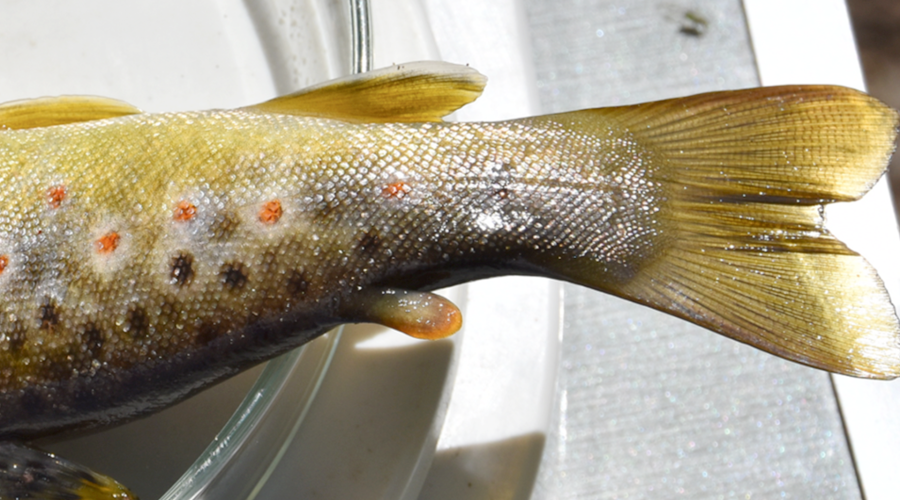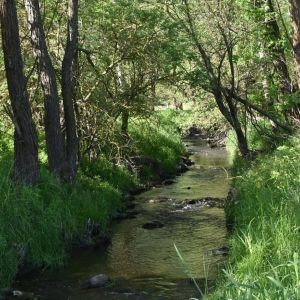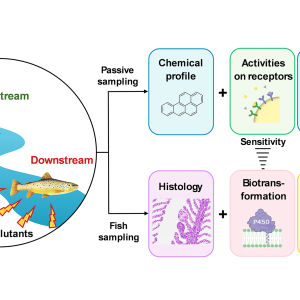Invisible Water Pollution Affects Fish Health

Even invisible water pollution can leave a substantial mark on nature. The results of a study published in the Journal of Hazardous Materials showed that seemingly clean water discharged from wastewater treatment plants can still pose risks to aquatic organisms in our rivers and streams.
Brown trout (Salmo trutta m. fario) is a species sensitive to environmental changes and a valuable indicator of water quality. In our experiment, we introduced trout into a watercourse receiving treated urban wastewater upstream and downstream of the wastewater treatment plant. We monitored fish for toxicological parameters at intervals of 6, 14, and 24 weeks. Simultaneously, using a non-invasive method called passive sampling, we monitored pollutants in the water and tested their biological effects through in vitro laboratory tests. This experiment was unique in combining real-world fish exposure with advanced trace analytical methods followed by toxicological assays. We measured specific changes in fish, such as hormone levels, stress responses, and tissue damage indicators, to understand their reactions to long-term exposure to low concentrations of pollutants.
The study results indicated that even treated water may contain micropollutants (residues of chemicals from commonly used products such as medications, cleaning agents, or pesticides) that accumulate over time. These substances can disrupt fish hormonal systems, weaken their defence capacity, and potentially endanger their reproduction.
Our study also highlighted the possibility of predicting environmental threats before visible damage occurs – thanks to passive water sampling and sensitive laboratory tests. This approach can contribute to better biodiversity protection, especially in urbanised areas where watercourses often receive treated but not entirely clean water. Furthermore, it could be part of future strategies to prioritise wastewater treatment plants to upgrade their purification technologies in line with new legislation. Our findings underscore the need for more effective wastewater management to protect aquatic organisms safely.
Further details can be found in the original paper:
Koubová, A., Toušová, Z., Šauer, P., de Sales-Ribeiro, C., Vrana, B., Smutná, M., Kocour Kroupová, H., Grabicová, K., Schmidt-Posthaus, H., Randák, T., Grabic, R., Hilscherová, K., Žlábek, V., 2025. Biomarker responses in wild brown trout from a headwater stream and their causal link to water pollution assessed through chemical analysis and in vitro reporter gene bioassays. Journal of Hazardous Materials 494, 138433. https://doi.org/10.1016/j.jhazmat.2025.138433
Author: Anna Koubová


